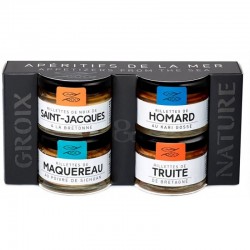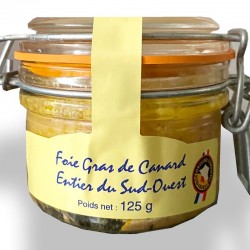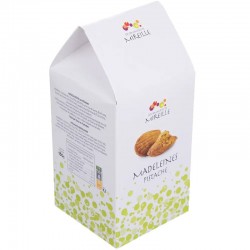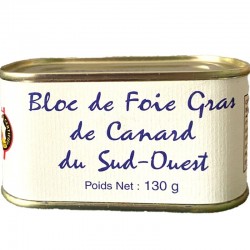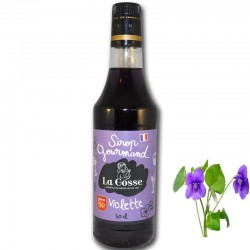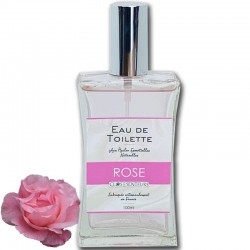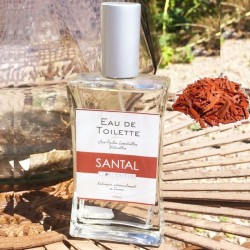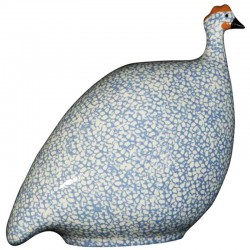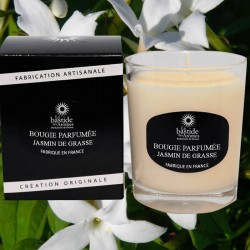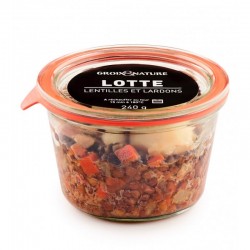How to choose the right foie gras
The foie gras is a staple of New Year's eve menus. Everyone appreciates it! It is a gourmet product. However, it is very difficult to find your way around so much the offer is important!
Follow our tips to find the best foie gras! In order to fully appreciate the richness of its aromas, discover our expert tips and advice. With this guide, foie gras will no longer have any secrets for you !
Foie gras is a popular and well-known festive dish in French cuisine. It can be eaten raw, semi-cooked or cooked, and can be offered in the form of fresh or canned products, consumed alone or as an accompaniment to other dishes such as meat.
According to French law, "foie gras is part of the cultural and gastronomic heritage protected in France. By foie gras is meant the liver of a duck or a goose specially fattened by force feeding".
An essential French specialty, foie gras is invited to our plates on the most beautiful occasions. Often associated with the end of the year celebrations, it is also honored in many recipes to enjoy a few precious bites throughout the year.
Whole or in bulk, goose or duck... our experts entrust you with their best advice and accompanying ideas to guide you in your choice.
Foie gras: beware of labels !
The label of the foie gras that one buys must include, among other things, its name according to clearly defined appellations: "Whole Foie Gras", "Foie Gras" and "Block of Foie Gras" and the list of ingredients, spices and aromatics, the limit date of consumption (DLC) for semi-canned food, or the limit date of optimal use (DLUO) for canned food, the identification of the batch, the weight, the sanitary number, the address of the manufacturer, the storage temperature, etc. complete the consumer information. In accordance with the regulations, no dyes are added to the foie gras.
Ready-to-eat foie gras are divided into three regulated categories:
- The whole foie gras : The top of the range
This is the top of the range, so the most expensive. It is composed exclusively of a whole foie gras or one or more lobes and a seasoning.
The plus: it is the best quality of foie gras on the market: extra fresh, deveined and seasoned. It is preferably consumed plain, slightly salted, sweetened or with brandy or a wine liqueur.
- The foie gras : The compromise
Much less qualitative, the name "foie gras" designates a preparation composed of pieces of lobes (minimum 20 g) agglomerated and seasoned.
The plus: it has a marbled and sought-after aesthetic appearance when sliced.
- The foie gras block: The 1st prize
It is a preparation composed of livers reconstituted from an emulsion of foie gras and water (10% maximum), seasoned and then molded. The blocks are - in principle - cheaper than whole foie gras but their texture and flavor are different.
The plus: in addition to being affordable, it is suitable for both small portions and much larger boxes. The foie gras block is ideal to be spread on toast.The "with pieces" blocks must contain at least 30% small pieces of lobes (10 g minimum).
Apart from these three names, there are preparations based on goose or duck foie gras :
- the foie gras parfait is composed of at least 75% foie gras to which lean goose or duck liver is added
- medallions, galantines, pâtés and goose or duck liver mousses must contain at least 50% foie gras
- "foie gras" preparations, such as goose or duck liver pâtés, must contain at least 20% foie gras.
What origin?
The IGP (Protected Geographical Indication) foie gras duck from the South-West guarantees that the palmipeds have been raised, slaughtered and processed in the region. It obliges producers to comply with specifications (slaughter at a minimum of 3 months, force-feeding with corn produced in the South-West, etc.).
But, in the opinion of the industry itself, these conditions are not very restrictive. The red foie gras label from the Landes is more demanding. Of at least 91 days, the breeding period is followed by 14 days of force-feeding with exclusively grain corn and not porridge. But the production remains confidential (less than 5% of the PGI) and the improvement of the quality is more sensitive on meat (breasts in particular) than on foie gras.
Semi-cooked or canned ?
The low-temperature cooking of the foie gras "semi-cooked" gives it a melting texture and a preservation of all its flavors. It can be stored between 0 ° C and + 4 ° C, from 30 days to 9 months depending on the recipes and packaging.
Traditional canned cooking (at high temperatures) guarantees a long shelf life. It can be stored at room temperature, preferably in a cool place and protected from light when it is in a jar. It improves and refines over time like a great wine.
The color is also a primary criterion revealing the freshness of the product. A blond appearance that is neither too reddish nor grayish should be preferred, and without traces of filaments. A foie gras that is too hard means that it is too fatty, and too soft it will melt during cooking.
Goose or duck foie gras?
Goose or duck, it's mainly a matter of taste :
The Goose foie Gras has a firmer texture and its color is paler. It lends itself more to sophisticated recipes with alcohol and spices (without having a heavy hand ...). The Duck foie gras, it has a more assertive, more rustic aromatic character. It can even be stamped with a PGI (protected geographical indication), specific to the South West which guarantees a corn diet in particular.
Goose Foie Gras is heavier: between 600 and 700 g compared to 450 to 600 g for Duck Foie Gras. This is a good average, a guarantee of quality. But, be careful, too big, the Liver will disgorge a lot of fat and less will remain after cooking. From a regulatory point of view, in order to be qualified as Foie Gras, goose liver must weigh at least 400 g and duck liver 300 g. Finally, according to purists, the best (and most expensive...) is goose Foie Gras!
Foie gras IGP, AOC, PDO: an update on the quality labels
Foie gras Protected Designation of Origin: the European label
One foie gras PDO has been prepared from A to Z in specific geographical areas in Europe. It is therefore a guarantee of quality on a European scale.
The PGI foie gras Protected Geographical Indication: another European Label
Unlike the PDO, the PGI guarantees that at least one stage of the manufacture of foie gras has been carried out in one of the specific geographical areas.
The foie gras AOC Controlled Designation of Origin: the best French label
The AOC has the most rigorous specifications. AOC products must be manufactured according to specific French rules and know-how. Obtaining it is therefore more complex but guarantees quality products.
Some gourmet ideas to accompany your foie gras
In addition to the great classics such as the onion confit or the fig confit, mango or passion fruit compotes will bring a fresh and original touch of exoticism to the plate.
We can also play with fruit pastes, cut into small cubes on a foie gras toast to emphasize the taste and bring an interesting texture game.
And to compose your food and wine pairings around the foie gras, we advise you: a truffled foie gras will reveal itself more on a white wine or a champagne. To accompany a duck foie gras from the Landes, especially if it is pan-fried, bet instead on a red wine that is not too tannic.
Every year, in France as elsewhere, the whole country prepares with enthusiasm and long in advance for the christmas festivities and New Year's Eve. With its soft and melting texture, the quality foie gras is rich, fleshy and creamy. We love foie gras for its delicacy and its inimitable buttery taste. No other Christmas dish is comparable to the decadence of a good foie gras, whether it is whole, or as a block. There are different qualities of foie gras, even when it comes to 100% foie gras. The term "whole foie grasr" should consist only of whole lobes of foie gras and a seasoning. The term "foie gras" refers to pieces of foie gras, not whole lobes, pressed together and seasoned. The term "fatty liver block" designates reconstituted fatty liver. If it contains a minimum of 30% of pieces, it can be called a "block with pieces", which is a higher quality than the simple "block". So the best foie gras for Christmas is whole foie gras.
You are now more "armed" to choose the foie gras or the speciality with foie gras that suits you. But be careful nevertheless, so that the foie gras exhales its delicate fragrance and subtle aromas, it is advisable to take it out of the refrigerator at least half an hour before the meal. The cold anesthetizes its aromas and its melting texture. For the staging, keep it simple: a good bread for foie gras, a good wine, a spoon of fig chutney and your foie gras of course !
Chef's tips for serving foie gras :
The foie gras canned should be placed in the refrigerator 24 hours before being served, then taken out 15 to 20 minutes before tasting.
It will thus retain its exhaling fragrance and its delicate flavors.
Slice it at the last moment with a toothless knife whose blade has been previously soaked in hot water (repeat this operation for each slice). For thinner and perfect slices, prefer a slicer or a foie gras lyre.
Foie gras is traditionally served at the beginning of a meal, when your taste buds are most willing to appreciate its aromas. It is also advisable to avoid drinks or foods with too pronounced a taste before enjoying a foie gras.
For the proportions: count 30 g to 40 g per person on a gourmet plate and 50 g to 60 g as a main starter.

